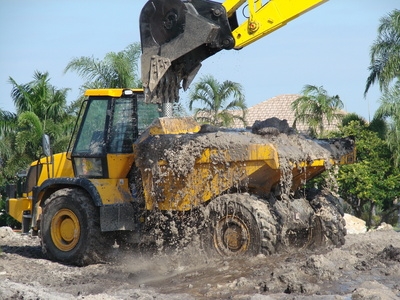
A portmanteau of the words "generated rotor," a gerotor is a positive-displacement pump that uses an inner and outer gear to move fluid. The inner gear has one fewer teeth than the ring-shaped outer gear; the volume of the inner rotor's "missing tooth" multiplied by the number of actual teeth on the center gear determines the pump's theoretical displacement per revolution. However, you'll still need to account for efficiency losses with rpm to determine the pump's actual output.
Remove the gerotor's center gear from the shaft; it should just pull off of the shaft. Measure the center gear's base circle with a set of dial calipers. The base circle is the shortest distance between the closest points on the center gear, which will typically be at the bottom of the depressions between the teeth. Measure the diameter of the center shaft hole, and measure the thickness of the gear. Example: our gerotor gear has a base circle of 100-mm, a center shaft hole of 10-mm and is 20-mm thick.
Calculate the volume of the center gear's base circle by multiplying the diameter by pi (3.14) and then by the gear's thickness. In our example, this works out to 6,280 cubic-mm (100 x 3.14 x 20 = 6,280). Determine the center shaft hole volume using the same method: diameter x pi x thickness. This comes out to 628 cubic-mm. Subtract the shaft hole volume from the base circle volume, and divide by 1000 to convert it to cubic centimeters. In our example, this comes out to 5,652 cubic-mm (6,280 - 626 = 5,652), which equals 5.652-cc for the base circle minus the shaft hole.
Drop a few drops of dish detergent into your water container. The dish detergent will break the water's surface tension, allowing it to settle in the beaker and give a more accurate measurement. You don't need much; three or four drops of detergent per liter of water will suffice. Stir the mixture.
Pour some of the soapy water mixture into the beaker to about double your base circle measurement; the exact amount isn't important, as long as it's enough to completely submerge the gear. Record the measurement. In our example, we'll fill the beaker to exactly 14-cc.
Carefully lower the gear into the beaker. Allow the gear and bubbles time to settle and record the new water level measurement. Subtract the new water level from the old water level to determine the absolute volume of the gear, then subtract the base-circle-minus-shaft-hole measurement from that to determine the volume of the teeth. In our example, the water level rose by 13.5-cc; that 13.5 minus the base-circle-minus-shaft-hole volume of 5.652 gives us a tooth volume of 7.848-cc. This is the amount of fluid your gerotor pump will theoretically displace per revolution.